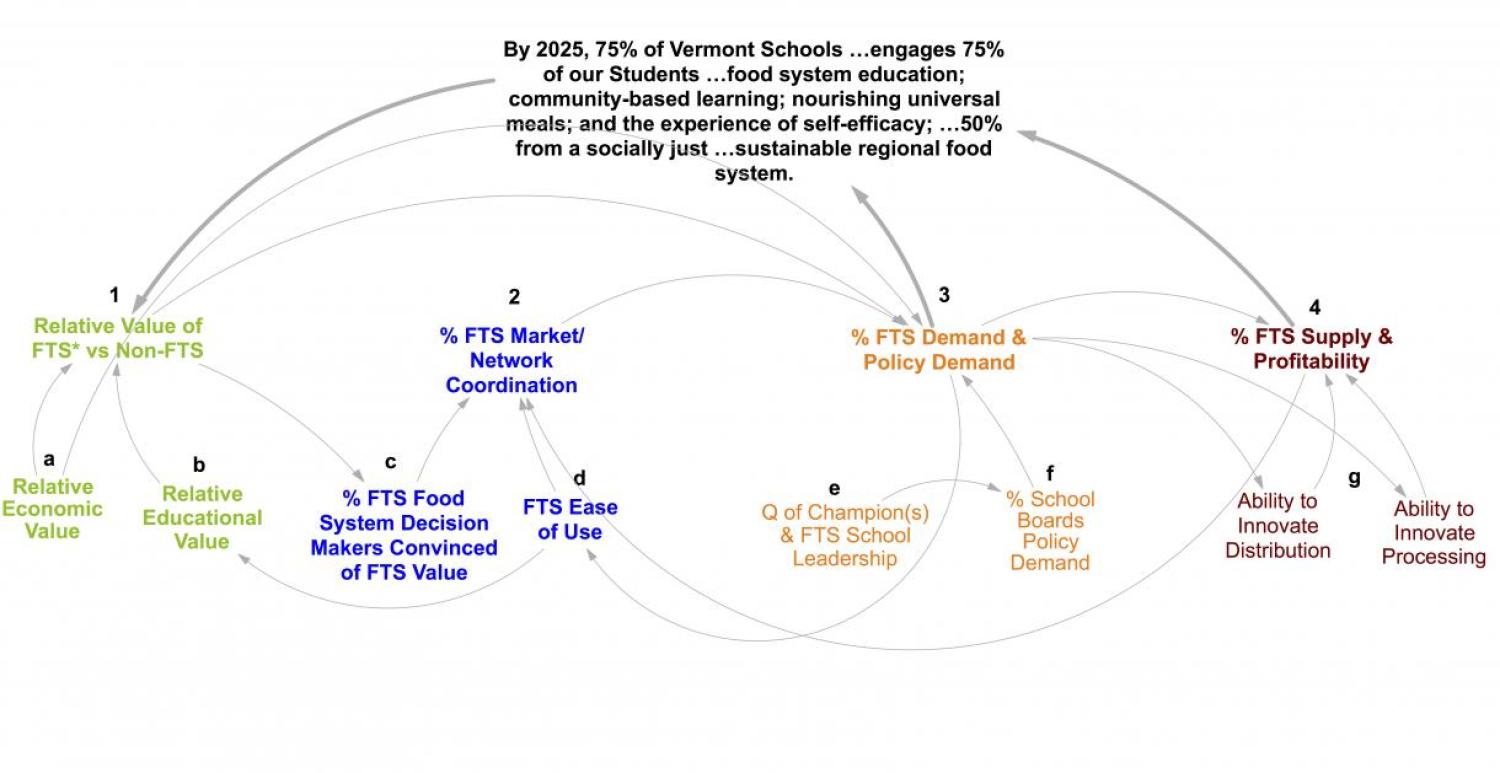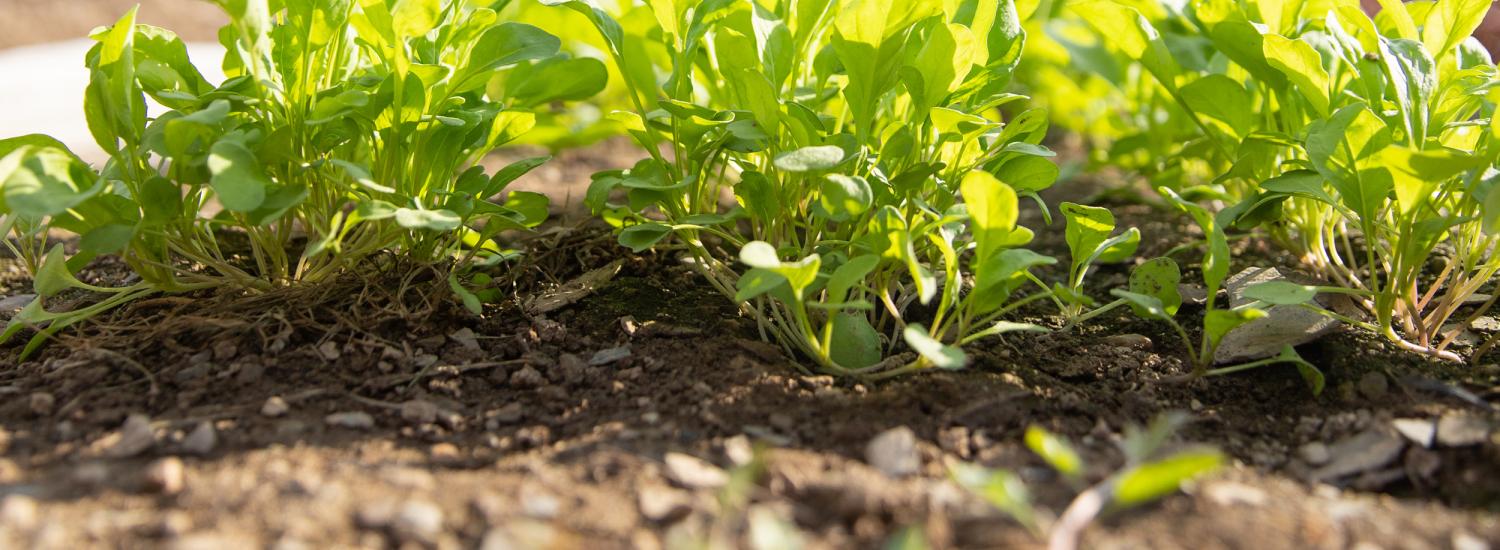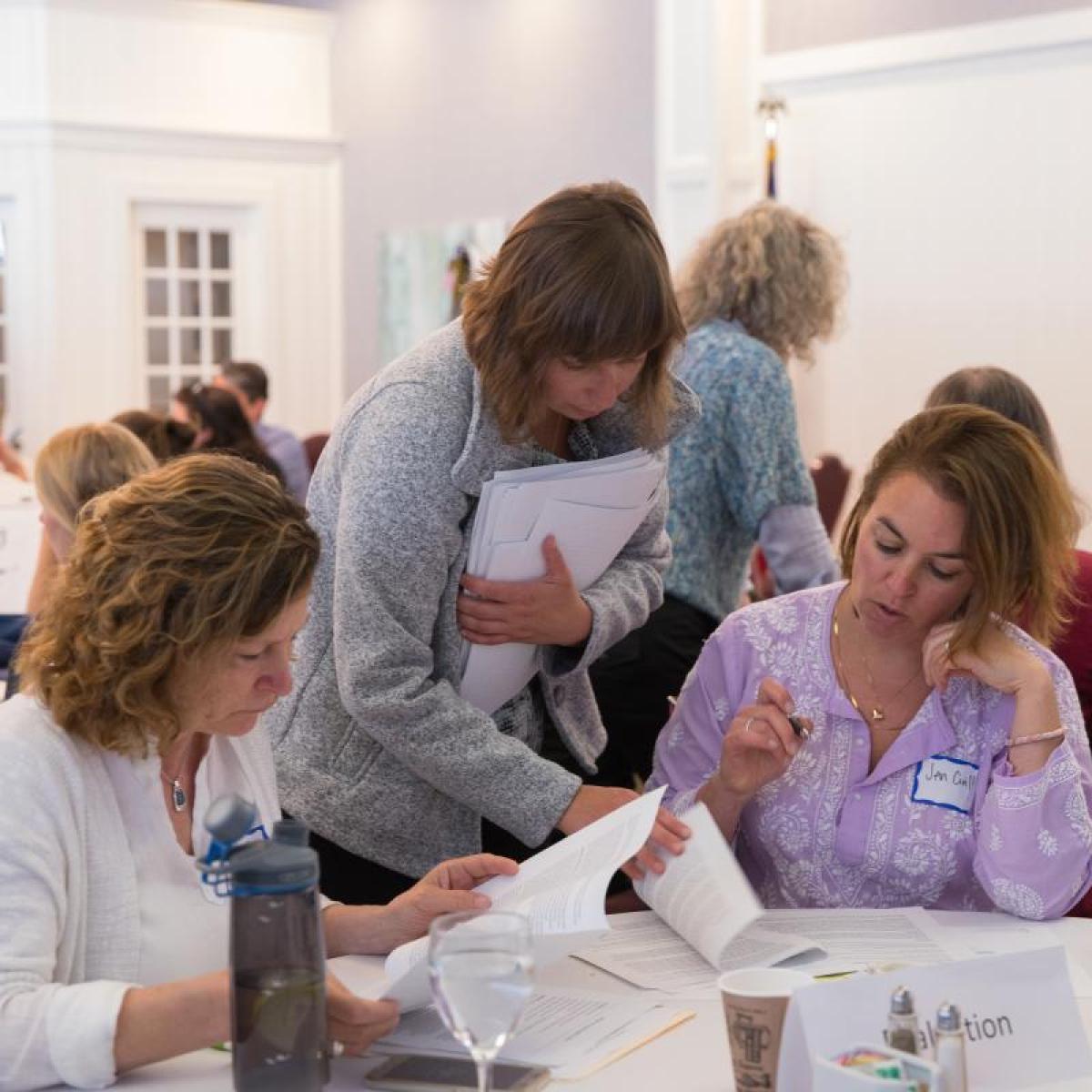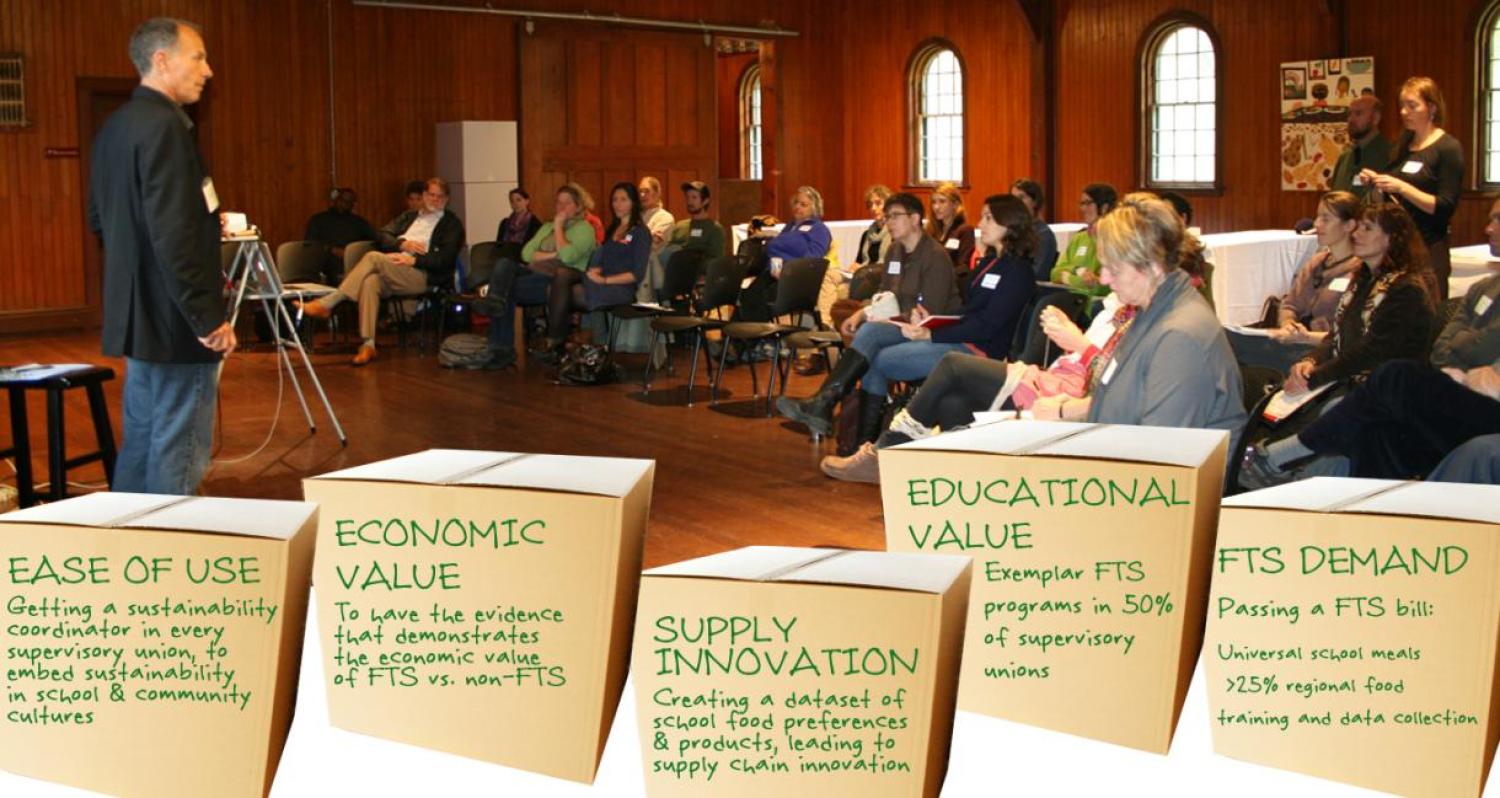With a system map, shared goal, and leverage points in hand, the whole group of farm to school leaders gathered for a two-day strategy summit and confirmed the magnitude and direction of the goal*:
By 2025, 75% of Vermont Schools will lead the cultural shift to a values-based food system that engages 75% of our students in integrated food system education; community-based learning; nourishing universal meals; and the experience of self-efficacy; purchasing at least 50% from a socially just and environmentally and financially sustainable regional food system.
*In 2022, the Network refreshed the goal to better reflect our work and vision.
Audacious? Yes. Necessary? Absolutely. Perfect? No. The point was not to hone in on a perfect goal, but rather to find a point in the distance that could get everyone moving in the same direction with the same urgency.
Then the group agreed on the leverage points that could drive change in the system and got to work. Five action teams developed specific goals and brainstormed strategies to move toward those goals. They created "rapid prototypes" of their best strategies, then revised and improved, revised and improved.
What did they come up with? Five pretty impressive ideas (the original five actions teams):
- Ease of Use: Getting a sustainability coordinator in every supervisory union, to embed sustainability in school and community cultures.
- Economic Value: To have the evidence that demonstrates the economic value of farm to school versus non-farm to school.
- Supply Innovation: Creating a dataset of school food preferences and products, leading to supply chain innovation
- Educational Value: Exemplar farm to school programs in 50% of supervisory unions.
- Farm to School Demand: Passing a farm to school bill with universal school meals with >25% regional food, training and data collection.
The summit finished with clear alignment, clear agreement on leverage points, and clear strategies for making change. Next up: making it happen.
Planning for Action
It's not easy to walk straight toward a point far off in the distance. It's so hard, in fact, that if you're orienteering — literally charting a course with a map and compass — you never walk straight toward your target. You pick a nearby point that's in the path you need to travel, walk to that point, and then pick another one. Each time you get a little closer and adjust your path before starting again.
Align, Act, Adjust. That's a rapid feedback loop, and it's exactly what the Farm to School Network is doing. Initially, each team chose a 90-day project: an achievable and important first step that would get them headed in the right direction and on the path toward their goals. At the action summit, the teams broke down those projects into discrete steps, identified resources and needs, and laid out clear plans for meeting, communication, and coordinating with the other teams. Then we came back together to report on progress, check alignment, and start out again towards the next 90 day target. We repeated that cycle every 4-5 months, moving closer to our goals.
To coordinate communication, each team identified one person who would serve as a link to a "common circle." The common circle meets monthly to make overarching decisions for the group, allocate funding, identify gaps, coordinate efforts and communication, measure progress, and ensure that the whole group is moving toward the goal. Each link brings updates and feedback from the individual teams and reports back on the progress of the whole.



